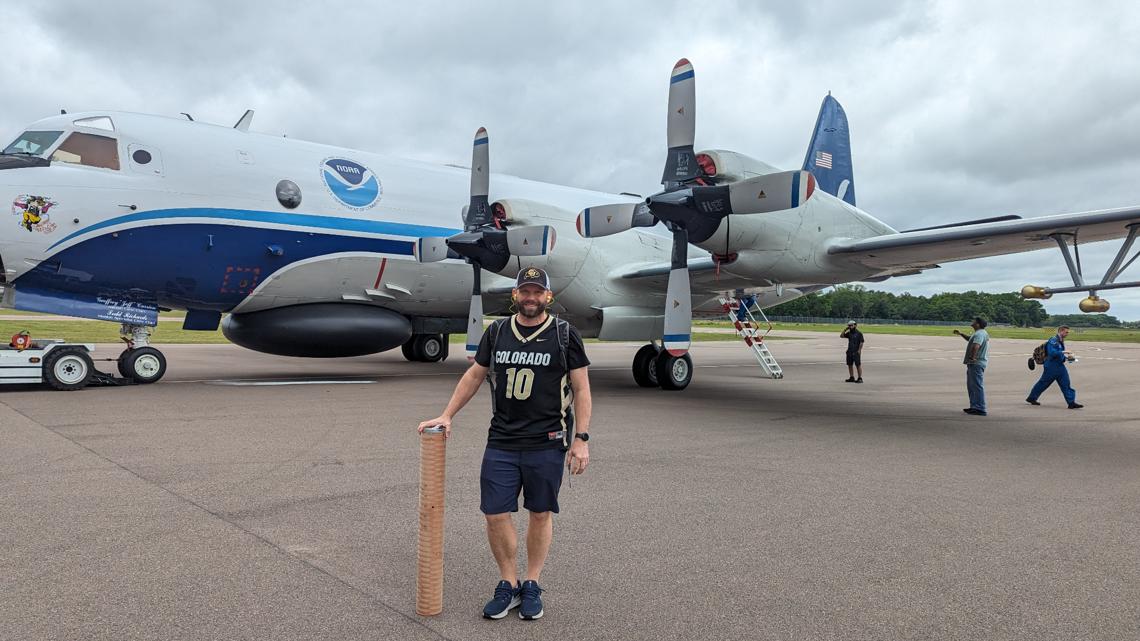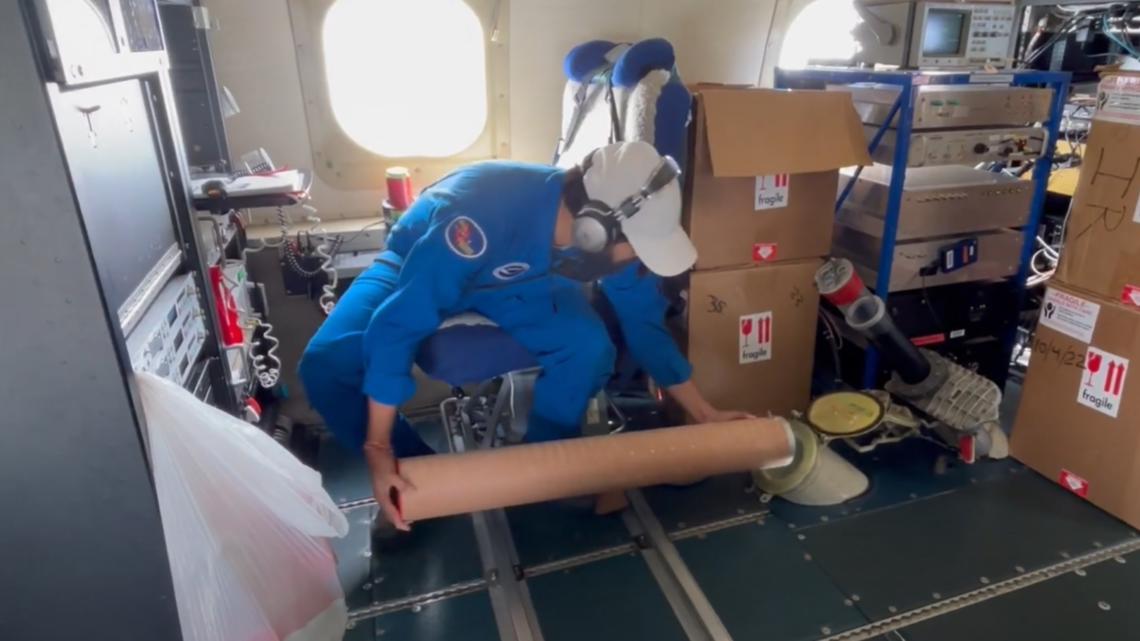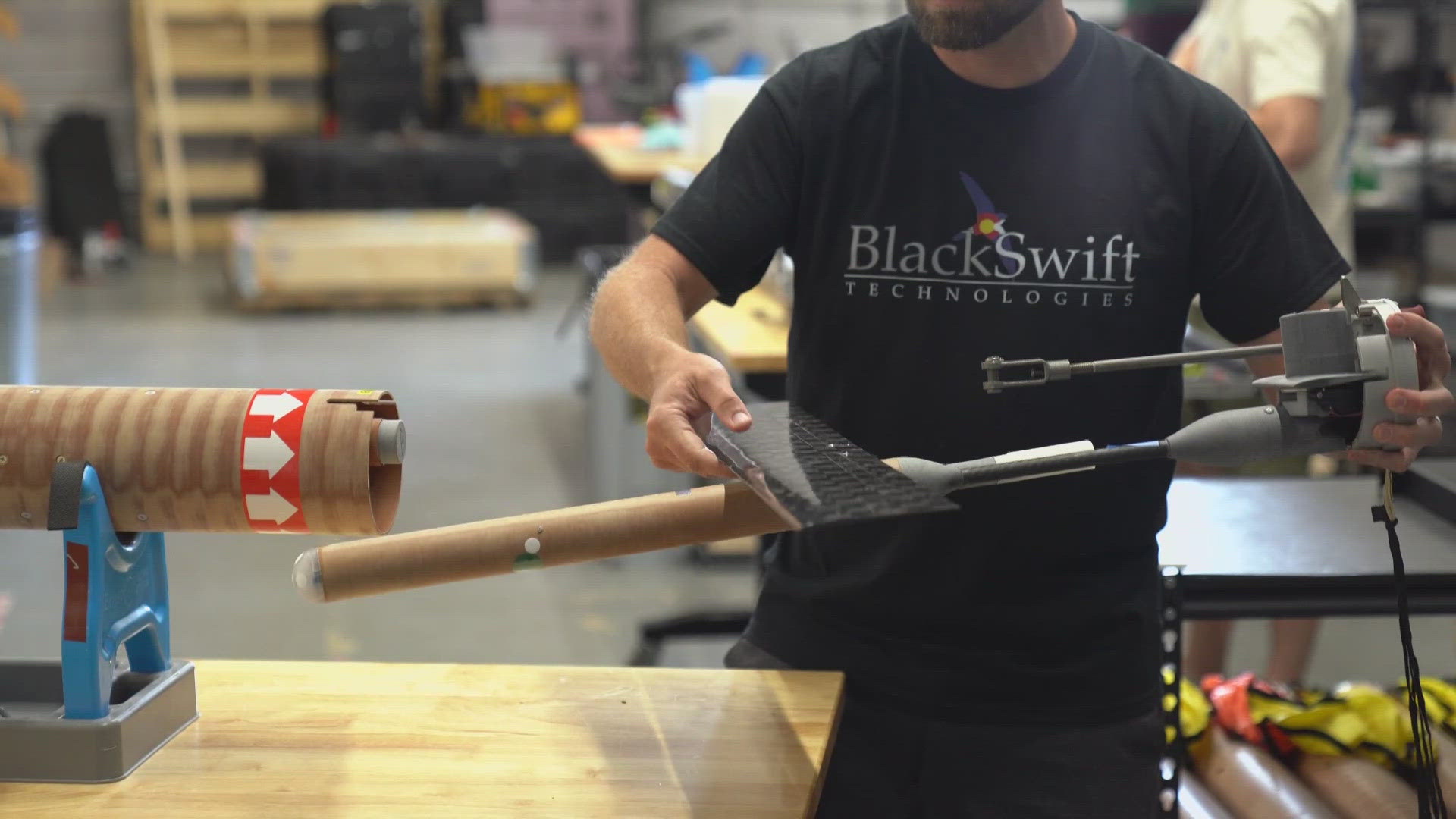LAKELAND, Fla. — When CU Boulder engineering graduate Jack Elston started his small business in 2011, he had no idea that it would eventually place him in the passenger seat of an NOAA Hurricane Hunter aircraft. But that's exactly where he ended up this week — inside the eye of category 2 Hurricane Francine.


His company, Black Swift Technologies, designed a prototype fixed-wing drone that could carry a sophisticated weather sensor inside the rage and turbulence of the strongest tropical cyclones on earth. The drone, which he calls the S-Zero, won a small business research grant competition hosted by NOAA and now it's being used to measure tropical cyclones.


“It was doing well over 150 miles per hour the last time we were flying through a storm as far as the ground speed goes just because the wind is pushing so hard with it,” said Elston, founder and CEO of Black Swift Technologies.
He said his drone made several trips into Hurricane Francine in the Gulf of Mexico before it made landfall in Louisiana, including two trips while it was still at tropical storm strength.
“It will see quite a bit of turbulence, too," he said. "I mean it’s only three pounds, but the cool thing is it just kind of goes with the wind, it’s just a drifter.”
The three-pound drone fits into an eight-inch diameter tube and gets jettisoned out of the belly of one of the P-3 Orion airplanes that NOAA uses to hunt hurricanes. A parachute deploys and the tube drops towards the ocean surface. When it reaches its target altitude, the S-Zero drone slides out of the tube, its wings scissor into position and the measurements begin.


"We can control its flight using a tablet but we built in some pretty smart algorithms that allow the drone to fly itself," said Elston. "Usually the meteorologists have a predetermined pattern that they want it to fly, so we just program that in for them."
The Hurricane Hunter crews usually carry three or four S-Zero drones on each flight because they are disposable. Elston said the drone can fly inside a storm for up to 100 minutes gathering meteorological measurements with about 1,000 times more data points than the current method.
The dropsonde instrument that has been used to make similar measurements since the early 1970s can only take measurements during its three-to-six minute freefall to the ocean.
The S-Zero can also fly just above the ocean's surface for long time periods, which means forecasters will get a first-of-its-kind real-time measurement of the energy transfer from the warm ocean waters to the atmosphere.
The additional data will up the detail in computer modeling and hopefully lead to improved track and intensity forecasts.


“Right now it’s kind of fun because they’re very excited to see this data — it's something they’ve never seen before,” he said.
He said the S-Zero drone program will be in an experimental phase for the first few years and during that time, Elston or one of his team members will be part of the Hurricane Hunter onboard crew to help with logistics and troubleshooting.
“It’s pretty fun going on the flights," he said. "I enjoy doing it for now, but I don’t want to keep doing it for too long because it is taxing. So I really appreciate what these guys do.”
Once the S-Zero program becomes part of the routine operation, Hurricane Hunter teams will run the drones without Black Swift tech support.

